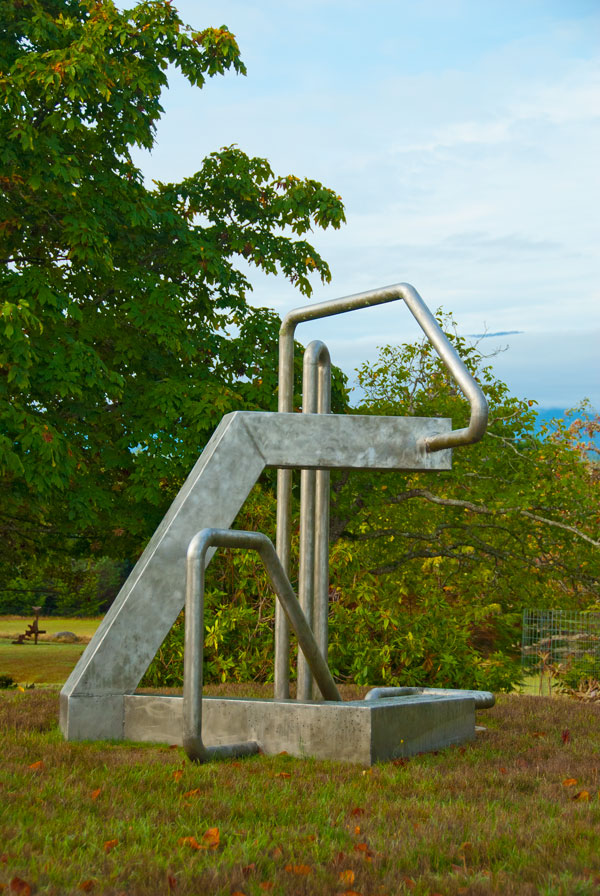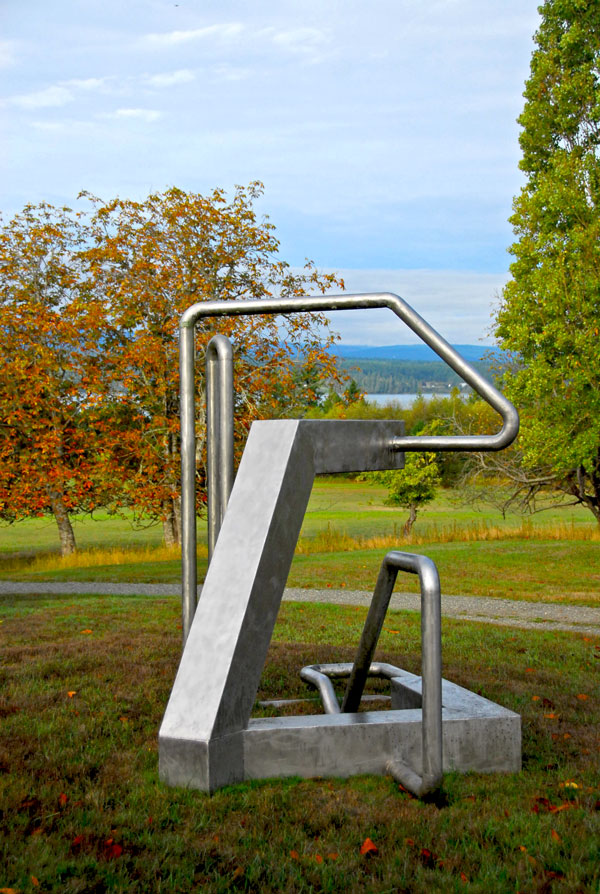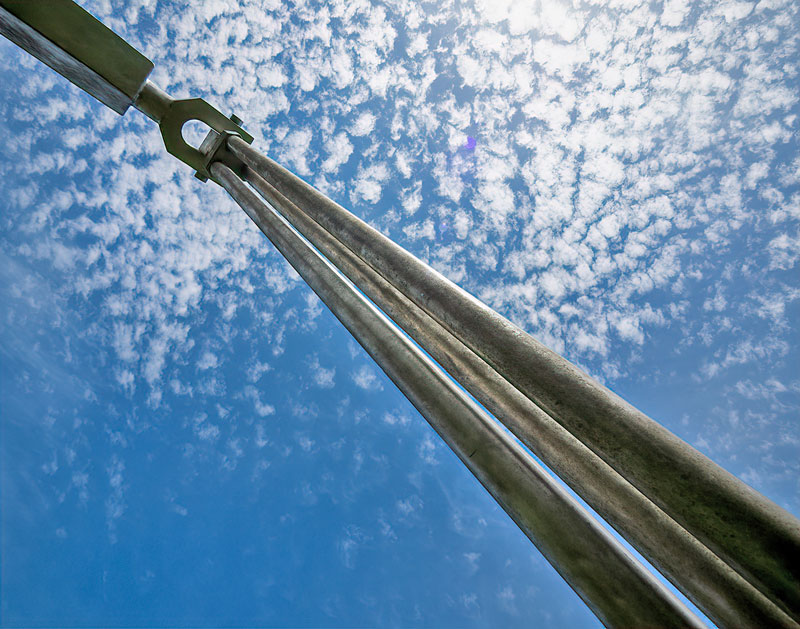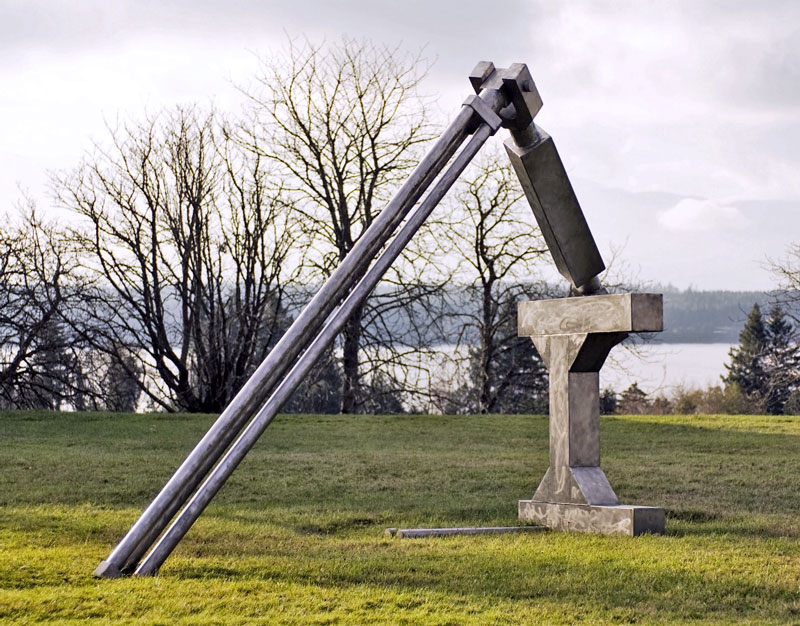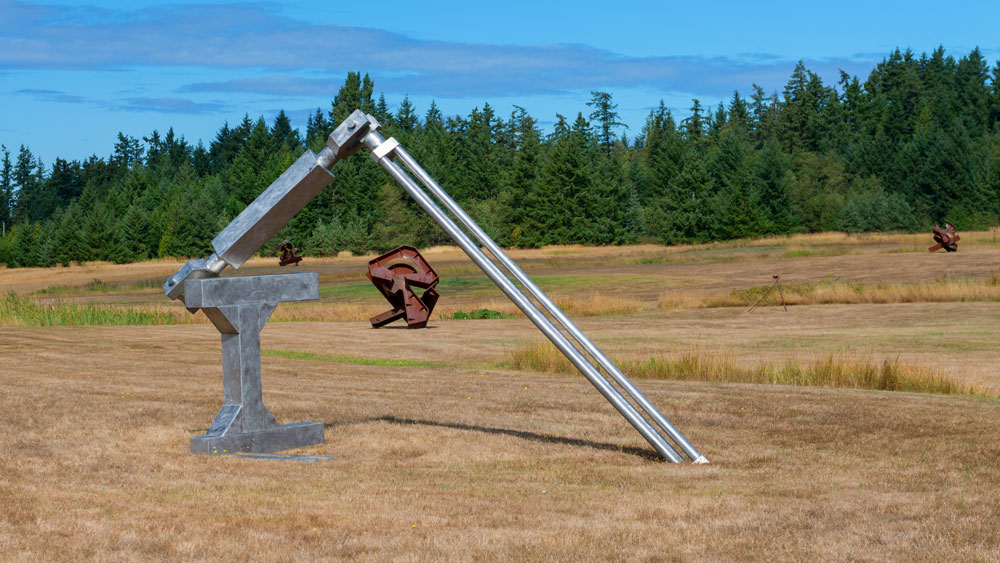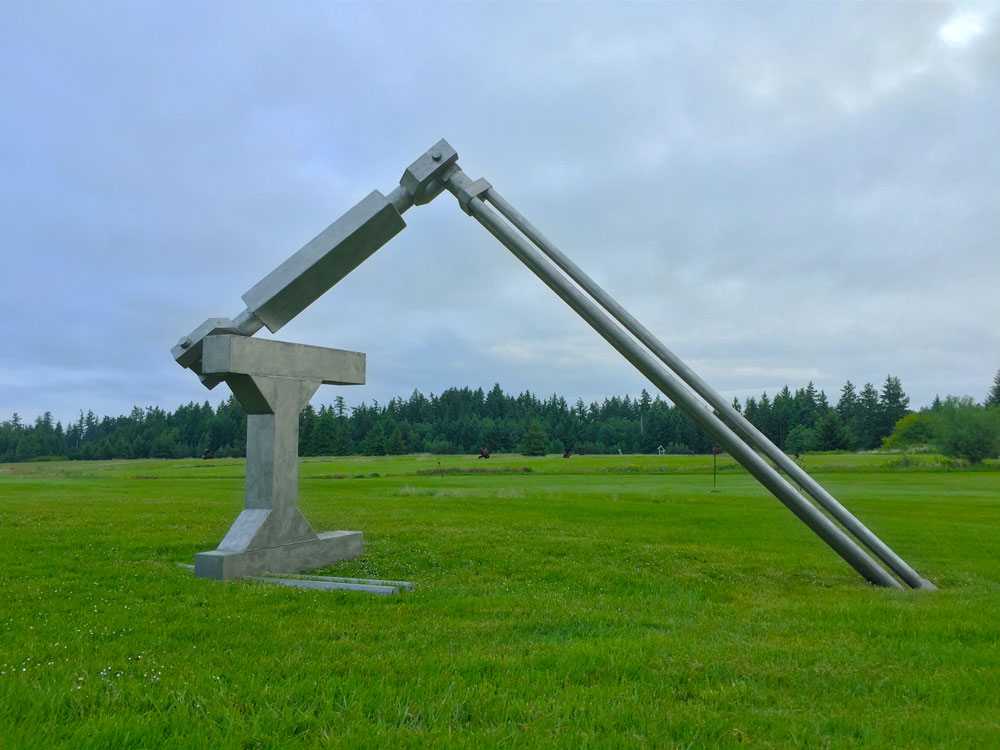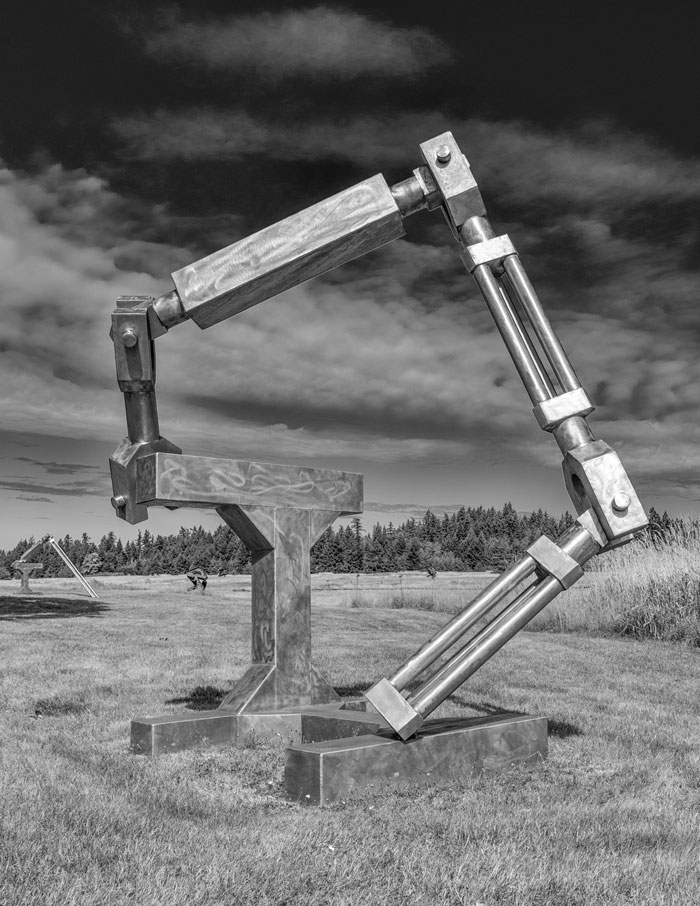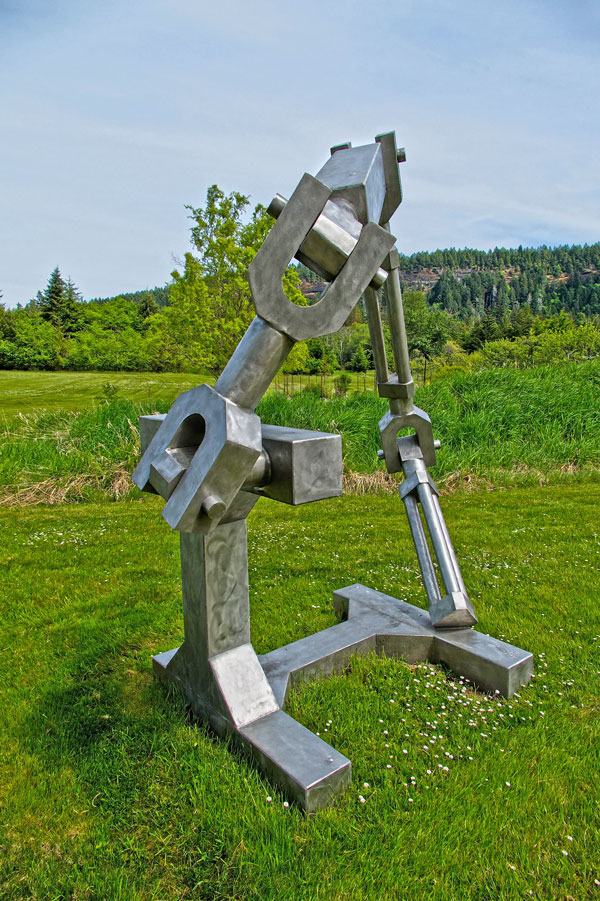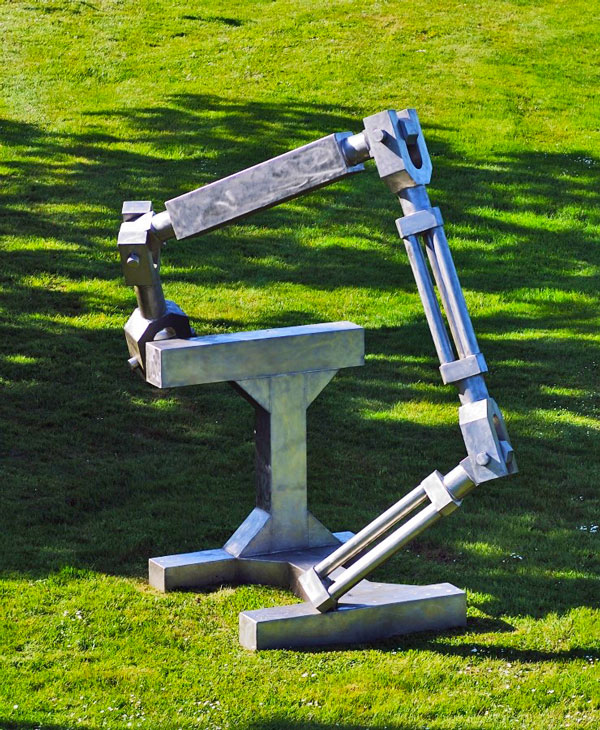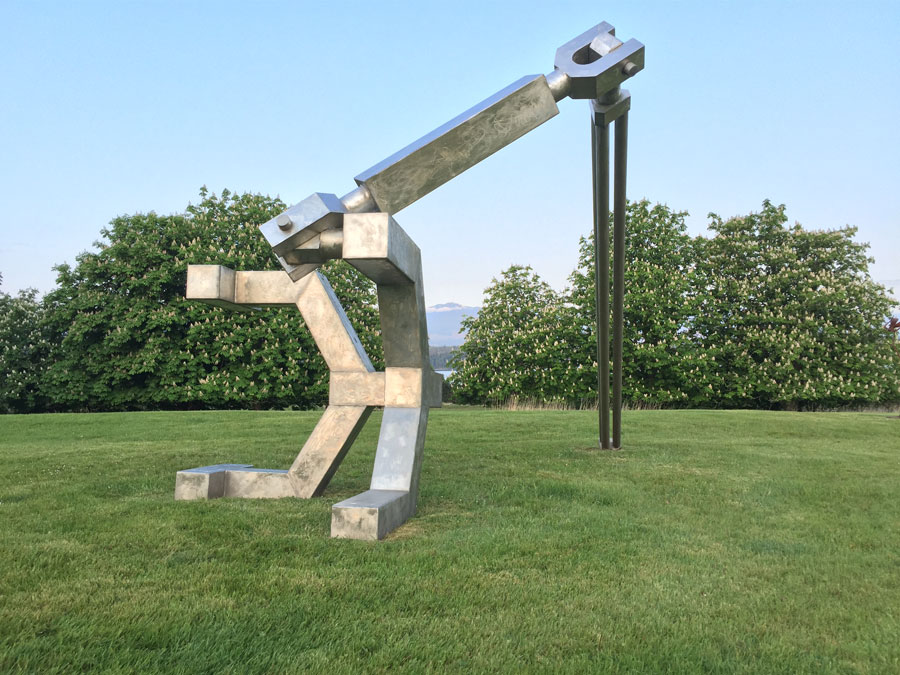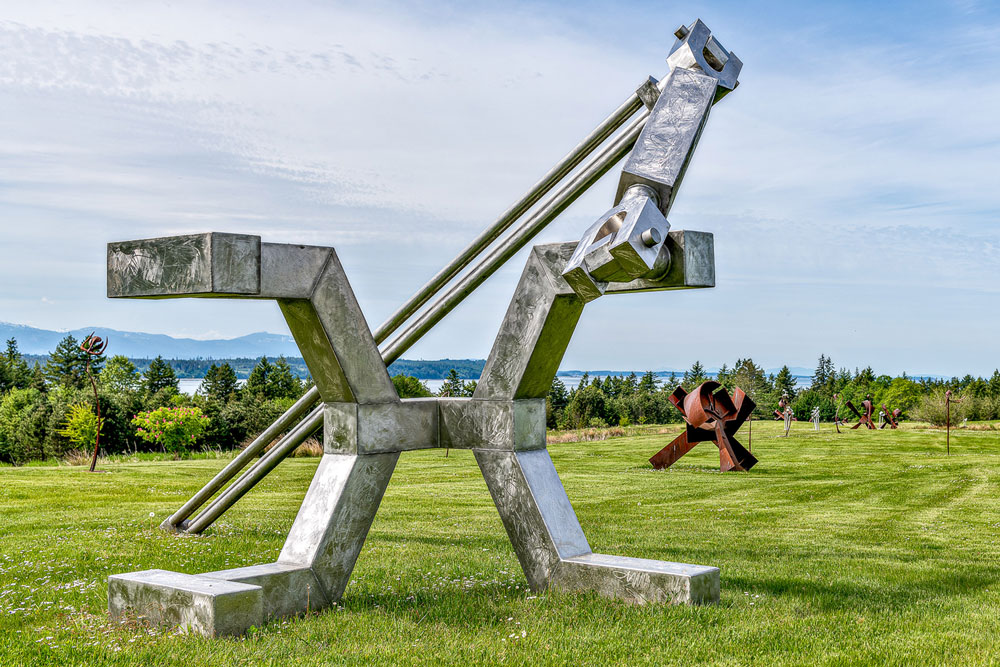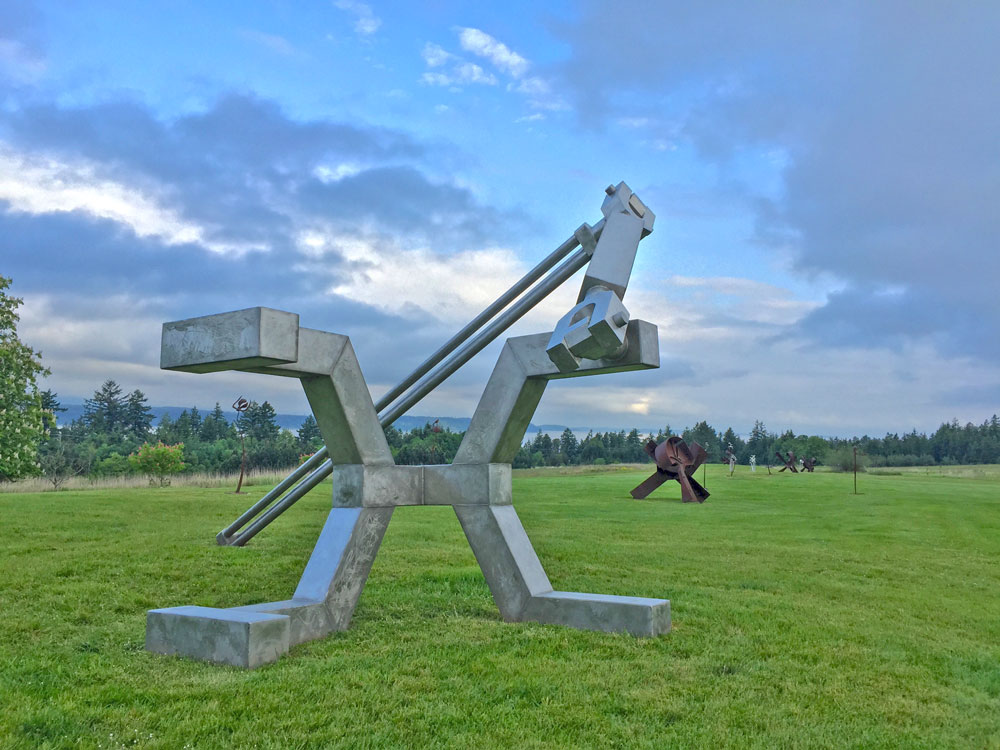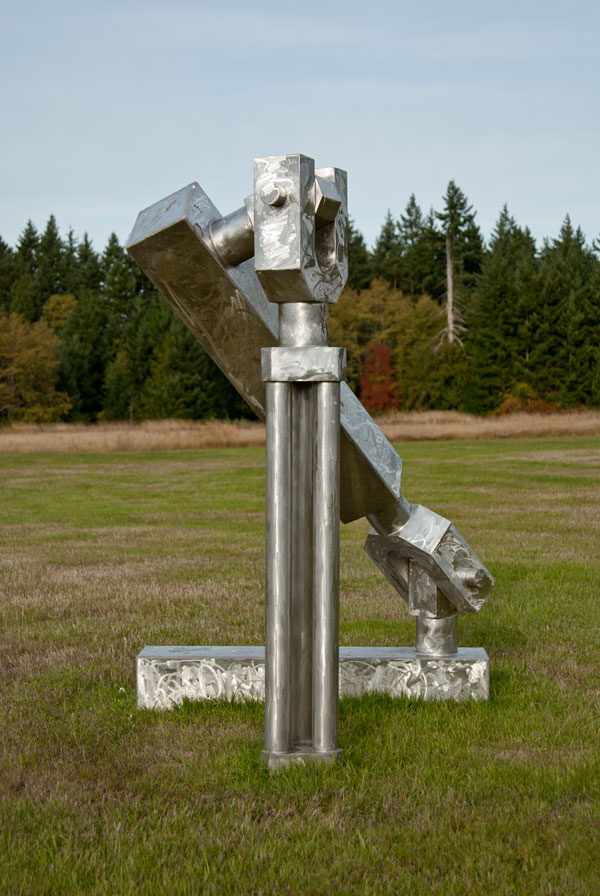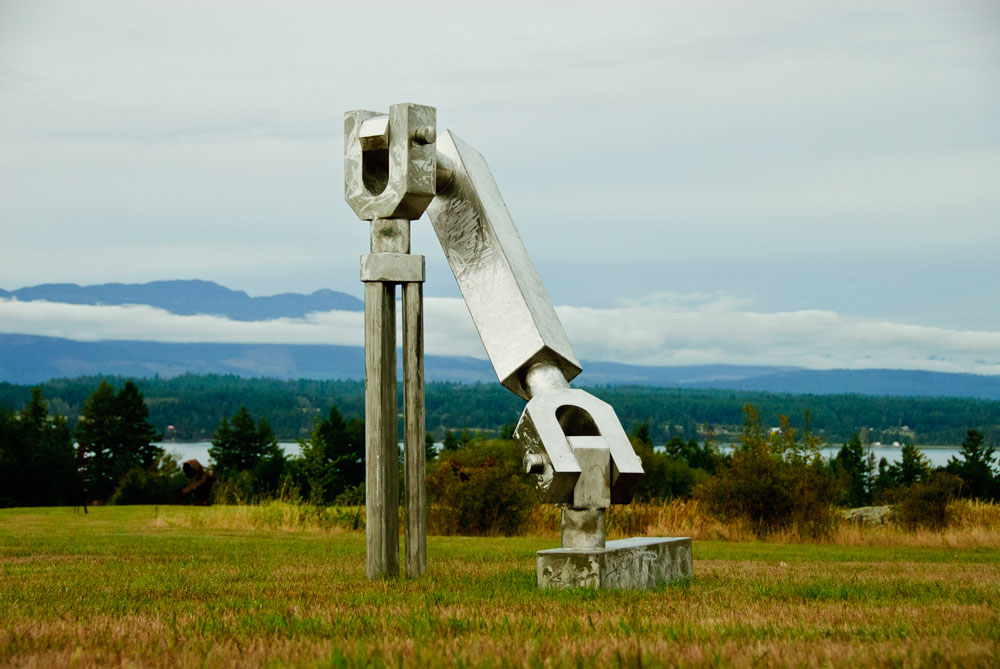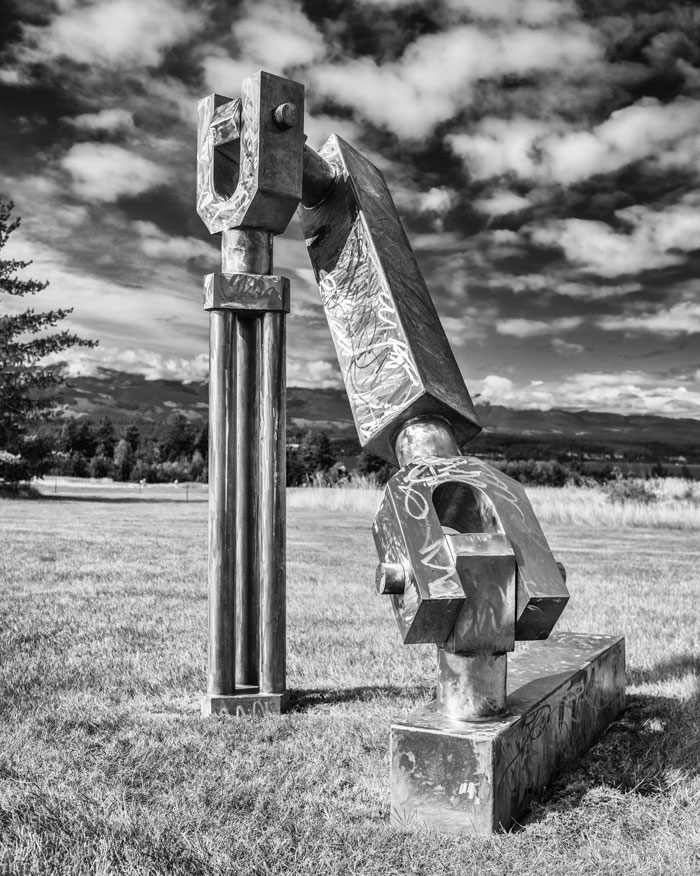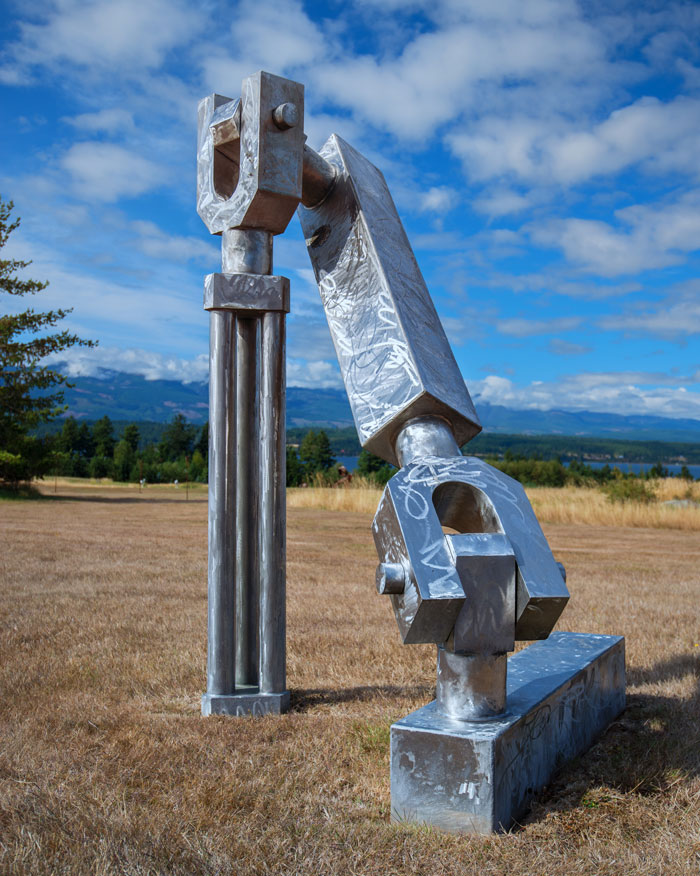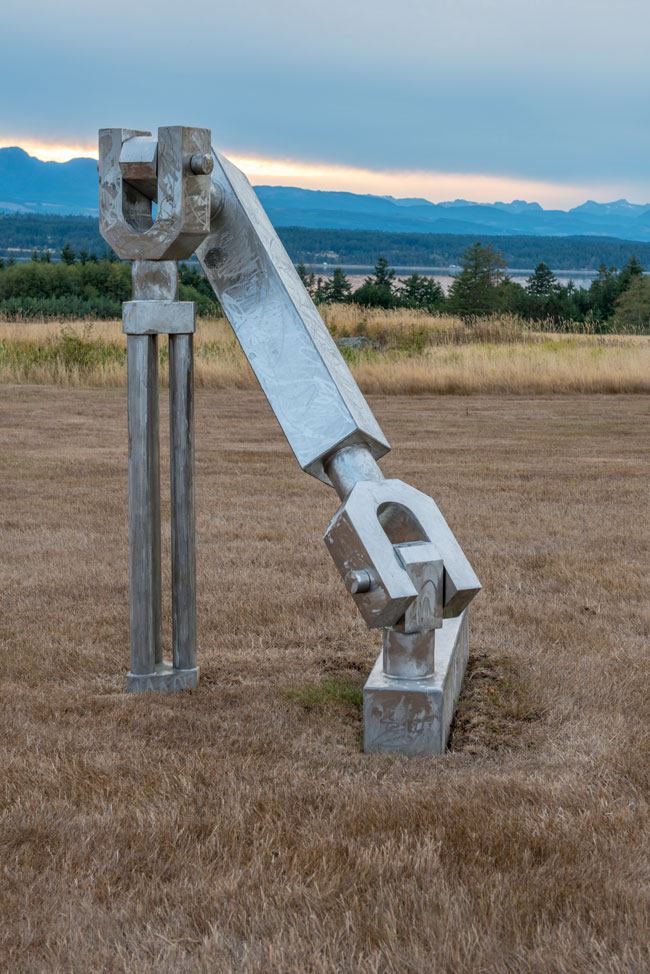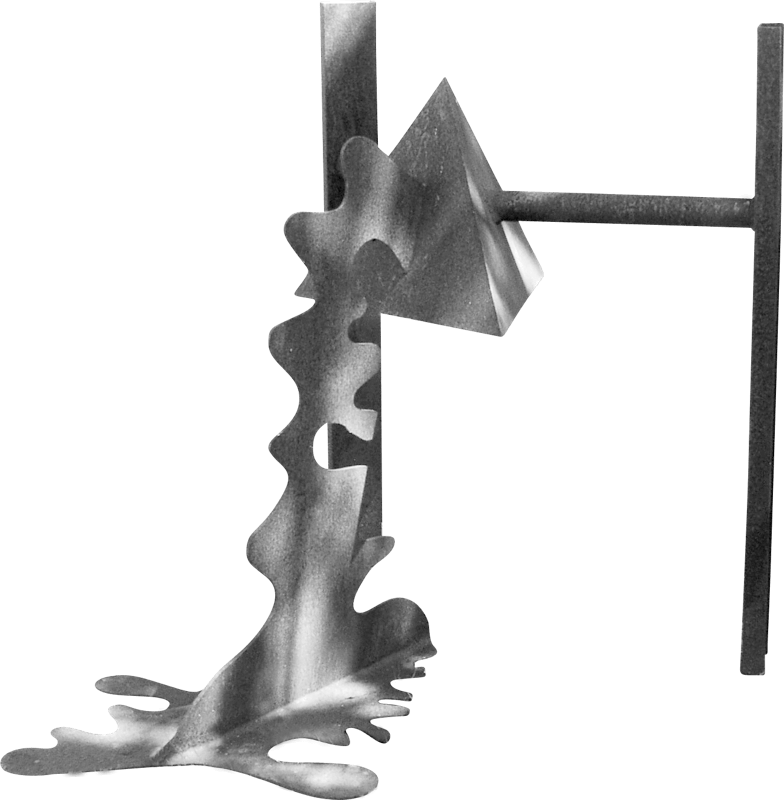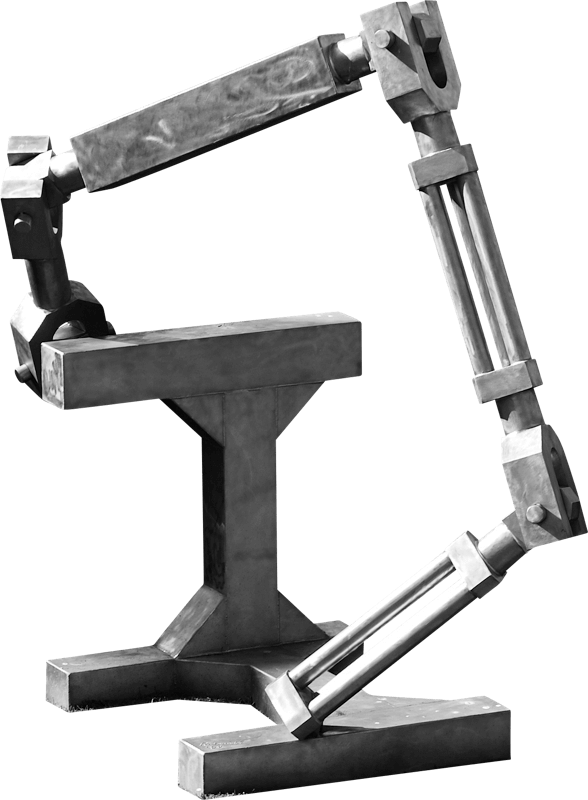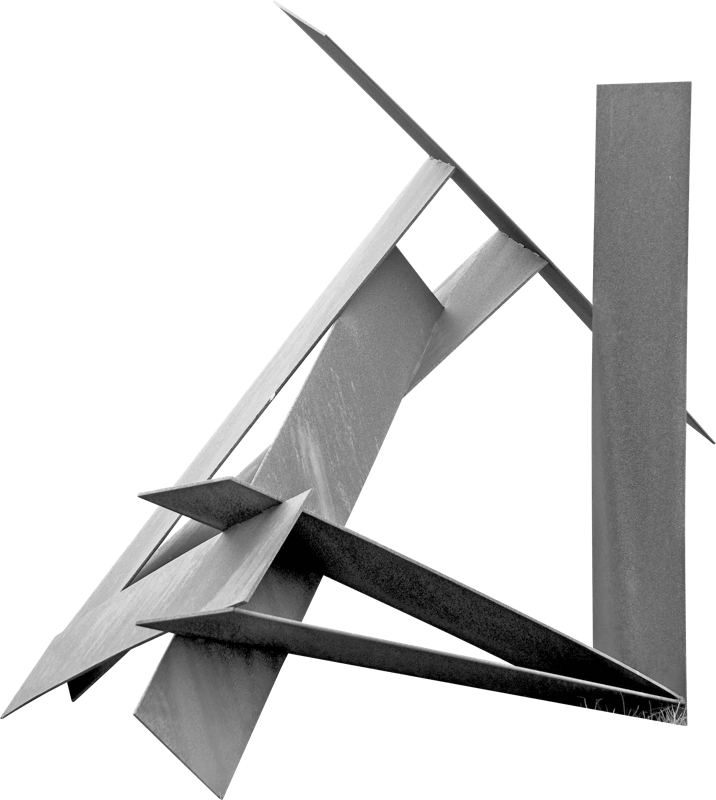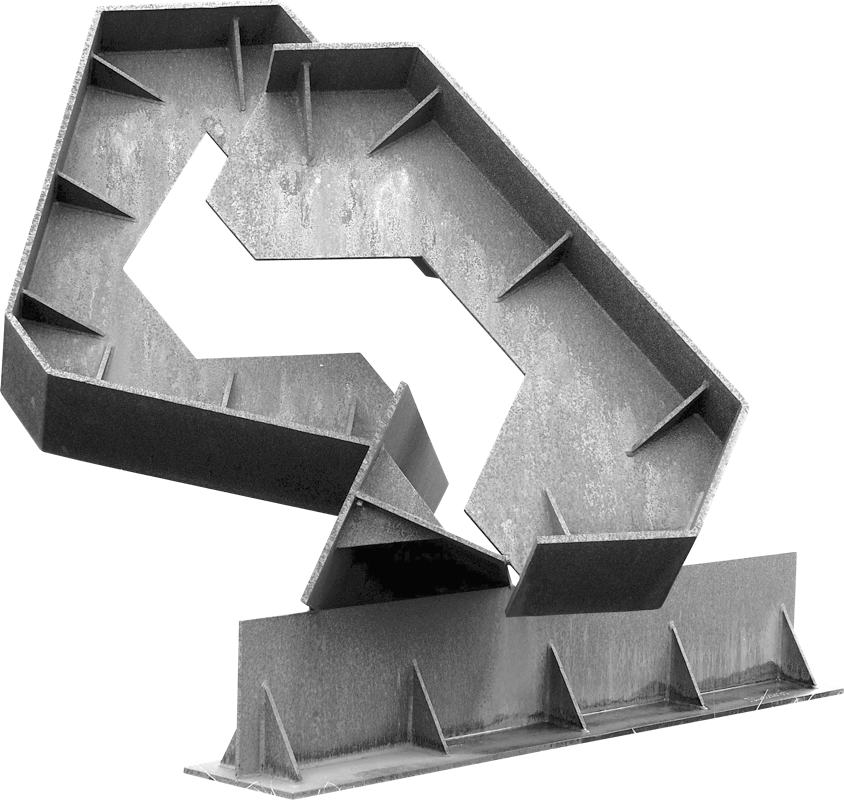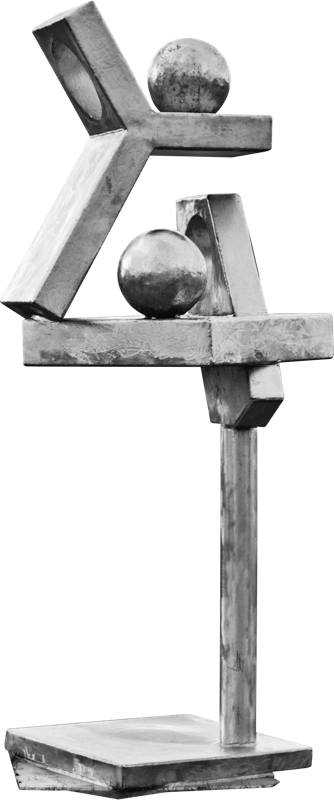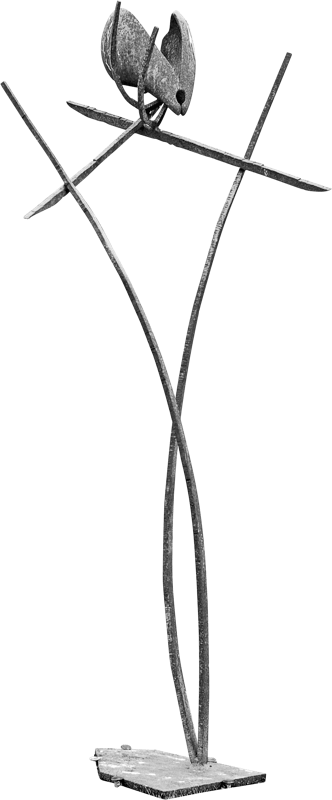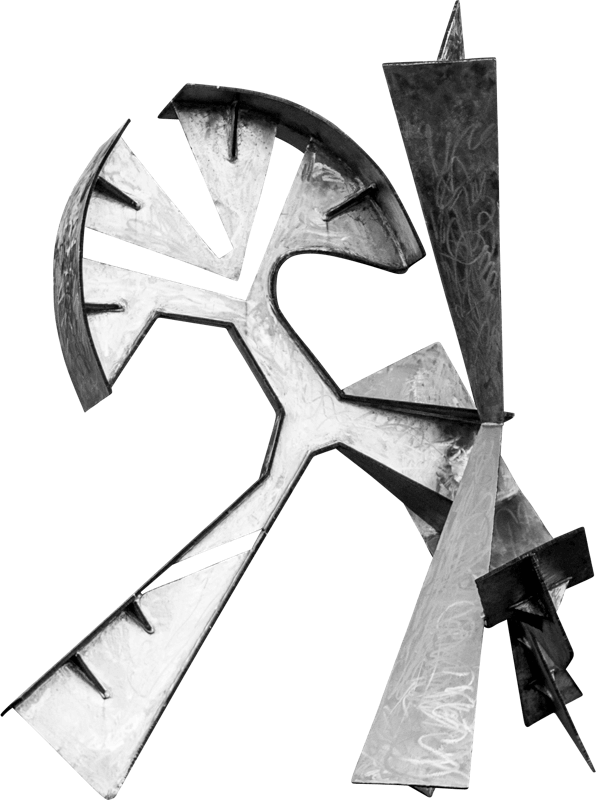Series 2
Upon finishing Series 1, Rubinoff became concerned that even though the tensile strength of steel had allowed him to create graceful compositions, the cuboid forms carried with them the metaphor for the weight and downward motion of stone. After extended contemplation, Rubinoff realized that this aesthetic of stone had its antecedents in the European culture of stone. He concluded that the ‘sickness of Europe’ lay in its constant attempt to rebuild the power of Rome, through compression and ultimately oppression. Alarmed by the implications of stone forms in his own own work, he resolved that his second series should embrace an aesthetic grounded in their own, modern, material: steel.
Series 2-1
Jeffrey Rubinoff
1982, Stainless 304 steel – Welded plate/tube, H 8ft W 5ft L 7ft
In this work Rubinoff begins to overcome the compressive aesthetic of stone that so bothered him in Series 1. Though rectilinear shapes remain, they are now trapezoidal in form, undermining their identity as blocks. They are also combined with the inherently metallic motif of the tube. Unlike its predecessors, this piece is devoid of downwards trajectory, though neither does it move upwards. All its vectors seem to spin around the negative space at the core.
In this work Rubinoff begins to overcome the compressive aesthetic of stone that so bothered him in Series 1. The viewer’s eye moves along the tubes and there is no settled sense of up or down. Rectilinear shapes remain, however they are now more trapezoidal in shape, interrupting the sense of them being blocks. The motion within this work is definitely overcome the overwhelming downward motion in Series 1, but the multitude of vectors are not definitely moving upward either. They all seem to move around the central negative space of the core.
Series 2-2
Jeffrey Rubinoff
1982, Stainless 304 steel – Welded plate/tube, H 10ft W 14ft L 5ft
Series 2-2
Jeffrey Rubinoff
1983, A 242 Cor-ten steel – Welded plate, H 9.5ft W 9.5ft L 8ft
Abandoning the multiple undulating vectors in Series 2-1, this work takes a new approach to the aesthetic problem of making the compositions rise rather than fall. Three tubes, akin to muscle fibres, ascend from the earth and attach an articulating fork like “joint”. The motion then flows into a cuboid form and down into an identical joint, itself rotated about 30-degrees to the first to create a sense of torsion within the cuboid. This twisting motion becomes the key to the muscular approach that characterizes this series.
Series 2-3
Jeffrey Rubinoff
1982, Stainless 304 steel – Welded plate/tube, H 10ft W 9ft L 6ft
This metaphor for torsion, or twisting, is evolved expertly in this piece, with each of the four elements exhibiting it. Muscles flow into articulated joints, working together as a flexible armature. This armature exerts a definite upward force, but the “work” this sculpture is doing is also directed at its base, as if it is constructing itself. In this work Rubinoff re-emphasizes his perception of his sculptures as spatial plastic music. The melody lines echo each other while the muscular armatures twist and interlock, as in Series 2-1, around a central void.
This metaphor for torsion, or twisting, is evolved expertly in this piece, with each of the four elements exhibiting it. The composition involves muscles flowing into articulated joints, working together as a flexible armature. This armature exert a definite upward force, but the “work” this sculpture is doing is also directed it’s own base, almost like it is working to construct itself. This concern with self-construction is evident in Rubinoff’s writing and thinking more generally on humanism and evolution. In this work Rubinoff also re-emphasizes his perception of his sculpture pieces as spatial plastic music. The melody lines echo each other while the muscular armatures twist and interlock, and as in Series 2-1, spiral around a central void.
Series 2-4
Jeffrey Rubinoff
1983, Stainless 304 steel – Welded plate/tube, H 10ft W 15ft L 9ft
Series 2-4
Jeffrey Rubinoff
1983, Stainless 304 steel – Welded plate/tube, H 10ft W 15ft L 9ft
In this work, the main armature is extended far away from the sculpture’s centre of gravity, attaching to a trio of “muscle fibres” rising from the earth as in Series 2-2. This extreme cantilevering, made possible by the sheer tensile strength of stainless steel, results in a thrilling upward trajectory. Also noteworthy is the beauty of the main body of the work, which connects two similar groups of trapezoidal cuboids rotated along a vertical axis at 90 degrees.
Series 2-5
Jeffrey Rubinoff
1983, Stainless 304 steel – Welded plate/tube, H 6.5ft W 4.5ft L 3.5ft
Rubinoff was often critical of a tendency of sculptors of his time to constantly increase the size of their work. With that in mind, Rubinoff here shrinks the motif of self-construction back down to human scale. It is a fitting conclusion to Series 2 – a series that abandoned the compressive metaphor of stone found in Series 1 in favour of an expansive one derived from the tensile qualities of steel. In Rubinoff’s view, this transition also had historical resonance. After all, the empires of the Old World built in stone.
This fifth piece in Series 2 returns the same gesture of rising and of self-construction back to human scale. Rubinoff explains that it bothered him that sculptors of his time including himself were constantly increasing the scale in order to increase complexity.
In this series Rubinoff’s moves from the compressive metaphor of stone in Series 1, directly to the tensile reality of steel. For Rubinoff steel represent a sense of liberation from this oppressiveness of stone, and from the old world empires build in stone. So steel really allows this expanding in all three dimensions. So the metaphor of steel is expansive rather than compressive.

